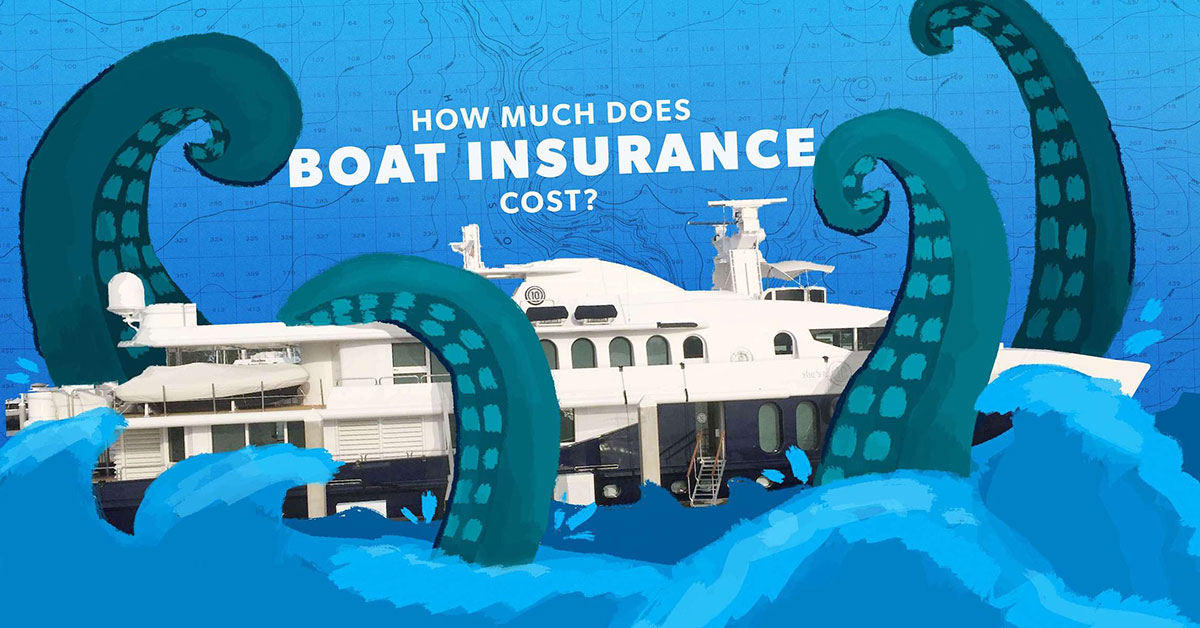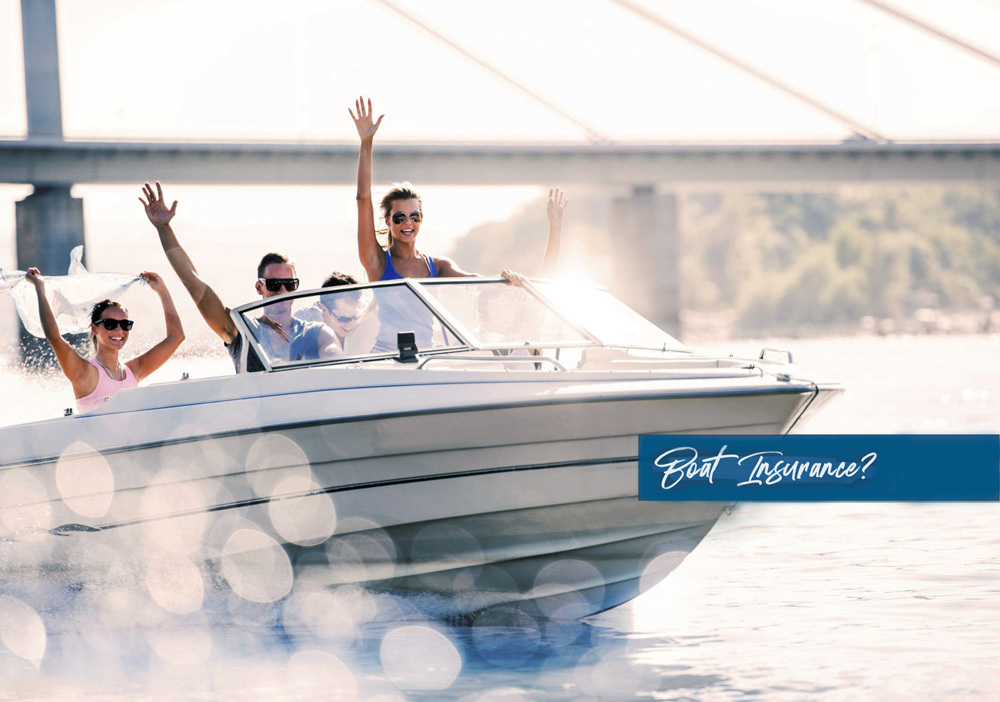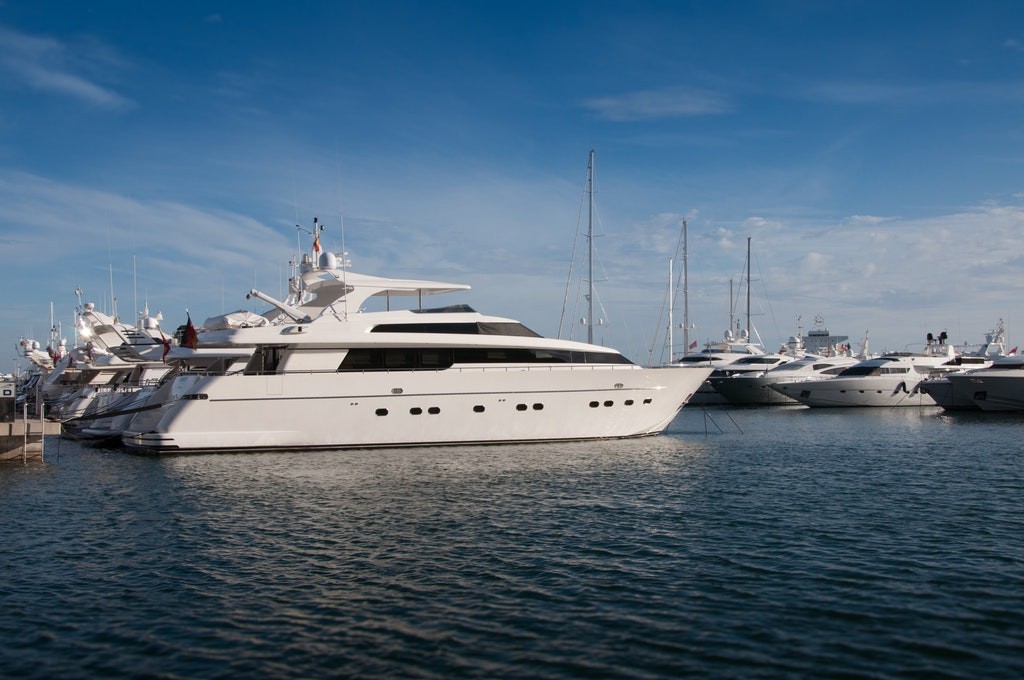Finding the best boat insurance is crucial for any boat owner. It’s not just about protecting your investment; it’s about peace of mind on the water. This guide will walk you through everything you need to know, from understanding different policy types to comparing providers and navigating the claims process. Get ready to make informed decisions and safeguard your aquatic adventures.
Boat insurance can seem complicated, but it doesn’t have to be. This comprehensive resource will break down the key elements of boat insurance, helping you understand the factors that influence costs, and the different types of coverage available. We’ll also provide real-world examples and case studies to illustrate how boat insurance works in practice, helping you make the best choices for your needs.
Introduction to Boat Insurance

Boat insurance is a crucial aspect of boat ownership, safeguarding your investment and protecting you from financial liabilities. It provides a safety net in case of accidents, damage, or theft, ensuring you can address any unforeseen circumstances. This comprehensive overview explores the importance of boat insurance, outlining its coverage types and the factors influencing premiums.Boat insurance policies typically cover various scenarios, including damage from collisions, fire, or storms.
It can also extend to liability coverage, protecting you from claims made by others in the event of an accident involving your vessel. Understanding the specific coverage options available is essential for choosing the right policy.
Factors Influencing Boat Insurance Premiums
Several factors contribute to the cost of boat insurance. These include the boat’s age, value, and size. Higher-value boats often attract higher premiums. The boat’s engine type and horsepower can also affect the premium. The location where the boat is stored and used plays a significant role.
Areas with higher risks of theft or severe weather often result in increased premiums. A boat’s history, such as any previous claims or accidents, also impacts the premium. The owner’s boating experience and safety record might also be considered, with experienced boaters often enjoying lower premiums. The type of use (e.g., recreational or commercial) and the level of coverage desired (comprehensive vs.
liability) can also significantly influence the final premium.
Examples of Boat Insurance Policies and Their Benefits
Different boat insurance policies cater to various needs and budgets. A basic policy might only cover liability, protecting you from claims by others. A comprehensive policy, on the other hand, covers damage to the boat itself, as well as personal liability. Policies often offer add-on coverages, such as coverage for personal belongings on board, or for specific risks like theft.
The benefits of a comprehensive policy outweigh those of a basic policy, providing a wider range of protections. For example, a comprehensive policy might cover damage from a storm or a collision, while a basic policy might only cover liability.
Comparison of Boat Insurance Providers
| Insurance Provider | Coverage | Premium (Example) | Customer Reviews |
|---|---|---|---|
| Example Provider 1 | Comprehensive coverage including liability, damage to the vessel, and personal belongings. Offers optional add-ons for specific risks. | $1,500 | Generally positive, with customers praising the quick claims process and helpful customer service representatives. |
| Example Provider 2 | Comprehensive coverage including liability, damage to the vessel, and personal belongings. Strong focus on marine-specific expertise and claims handling. | $1,800 | Mostly positive, highlighting the provider’s extensive network of marine-certified adjusters. |
| Example Provider 3 | Comprehensive coverage with a focus on affordability. Provides a wide range of coverage options. | $1,200 | Positive reviews from customers who appreciate the transparent pricing and accessible customer service. |
Note: Premiums are examples and may vary based on individual circumstances. Customer reviews are general assessments and individual experiences may differ. Always verify specific coverage details and premiums with each provider.
Types of Boat Insurance
Boat insurance policies are designed to protect boat owners from financial losses due to various incidents. Understanding the different types of coverage available is crucial for selecting the appropriate policy to meet your specific needs and budget. Choosing the right coverage can provide peace of mind knowing your investment is protected.
Hull Insurance
Hull insurance is a fundamental component of boat ownership. It specifically covers the physical damage to the boat’s structure. This protection is essential for replacing or repairing the boat if it sustains damage from perils such as collisions, grounding, fire, or storms. It’s important to remember that hull insurance typically does not cover damage from wear and tear or pre-existing conditions.
Liability Insurance
Liability insurance is designed to protect boat owners from financial responsibility if they cause injury or property damage to others while operating their vessel. This coverage is legally required in many jurisdictions and provides crucial protection in the event of an accident. It typically covers the cost of medical expenses, property damage, or legal fees resulting from an incident where the boat owner is at fault.
Comprehensive Insurance
Comprehensive insurance is a broader form of coverage, combining elements of hull and liability insurance. It extends protection beyond accidental damage to include perils such as theft, vandalism, and sinking. Comprehensive policies often include a broader range of covered events, offering a more comprehensive safeguard for your investment.
Differences Between Policies
Hull insurance focuses solely on the physical damage to the boat. Liability insurance covers financial responsibility for injuries or damage caused to others, while comprehensive insurance combines both aspects, offering more comprehensive protection against various perils. The choice between these policies often depends on individual needs and budget considerations.
Table of Common Exclusions
| Policy Type | Key Features | Common Exclusions |
|---|---|---|
| Hull | Covers damage to the boat’s structure, including the hull, deck, and other major components. | Wear and tear, pre-existing damage, damage caused by intentional acts, and damage from inherent defects in the boat’s materials. |
| Liability | Covers financial responsibility for injuries or property damage caused to others while operating the boat. | Damage to the insured boat, intentional acts, pre-existing conditions in the injured party, and damage resulting from the insured’s intoxicated state. |
| Comprehensive | Combines hull and liability coverage, offering broader protection against various perils. | Damage from wear and tear, pre-existing damage, intentional acts, excluded perils as specified in the policy, and damage resulting from war or nuclear events. |
Finding the Best Boat Insurance
Securing the right boat insurance is crucial for protecting your investment and ensuring peace of mind on the water. A comprehensive policy can cover various risks, from accidental damage to theft and liability. This section details the steps to find the best insurance fit for your specific boating needs.Finding the ideal boat insurance provider involves a strategic approach, encompassing various methods for comparing policies and understanding the specifics of each coverage.
This process ensures you select a policy that adequately protects your vessel and meets your budgetary requirements.
Comparing Boat Insurance Quotes
Obtaining multiple quotes is a fundamental step in the insurance selection process. Comparing quotes from different providers allows you to assess price variations and coverage options.
- Online Comparison Tools: Online platforms dedicated to insurance comparison provide a streamlined way to request quotes from multiple providers. These tools often present a summarized overview of available policies, facilitating a quick initial assessment of options.
- Direct Contact with Insurance Agents: Speaking directly with insurance agents provides an opportunity for personalized advice. Agents can explain policy nuances and help tailor a plan to specific boating activities and potential risks.
- Brokers: Insurance brokers act as intermediaries, connecting you with various insurers. This approach can be particularly beneficial for individuals seeking specialized or complex boat insurance coverage.
Understanding Policy Details
Carefully reviewing policy documents is paramount to understanding the intricacies of the coverage offered. It’s crucial to comprehend the specifics of the policy before committing.
- Coverage Limits: Understanding the financial limits of coverage for various events is essential. Consider factors like the value of your boat, liability limits, and coverage for specific incidents, such as collision or fire.
- Exclusions: Policies typically contain exclusions that Artikel situations not covered. Thoroughly reviewing these exclusions ensures clarity on what is and isn’t protected.
- Deductibles: Deductibles represent the amount you’ll pay out-of-pocket before insurance coverage kicks in. Evaluating different deductible options helps determine the balance between cost and coverage.
Choosing the Right Policy
Selecting the appropriate boat insurance policy depends on individual needs and circumstances. Consider factors like the age and value of your boat, your boating habits, and your desired level of coverage.
- Assess Your Needs: Evaluate your boating frequency, the type of boating activities, and the potential risks associated with your vessel. This will assist in selecting a policy that best aligns with your individual needs.
- Compare Features: Carefully compare features like liability coverage, collision coverage, and comprehensive coverage to find the best fit. Consider the types of water activities and risks involved in your boating experience.
- Consider Budget: Determine your budget for boat insurance premiums and select a policy that offers suitable coverage without exceeding your financial limitations. Evaluate the cost-benefit relationship between coverage and premium.
Case Studies and Examples
Understanding boat insurance claims and settlements is crucial for boat owners. Real-world examples highlight how different situations are handled and the importance of a well-structured policy. This section delves into various scenarios, outlining the claim process and showcasing how a proactive approach can save money.
Real-World Claim Scenarios
Insurance claims vary widely depending on the nature and extent of the damage. A comprehensive understanding of potential scenarios is essential for informed decision-making. Consider these examples:
- Collision with another vessel: A boat owner experiencing a collision with another vessel might file a claim for damage to their boat’s hull, engine, and other components. The claim process typically involves gathering evidence, like witness statements and photographs, and submitting this documentation to the insurance company. The severity of the damage directly impacts the compensation amount.
- Storm Damage: A severe storm can inflict substantial damage to a boat, potentially resulting in significant repair costs. In this instance, the insurance company will assess the extent of the damage based on the policy’s coverage and the available evidence, such as photos and weather reports. The claim settlement process depends on the specific coverage details within the policy.
- Theft: If a boat is stolen, the insurance policy will often cover the replacement cost of the vessel, including any equipment. The owner needs to file a police report and provide proof of ownership to the insurance company. The insurance company will investigate the theft and payout the claim based on the policy’s terms.
The Claim Filing Process
Filing a claim involves a systematic approach that can minimize delays and ensure a smooth process.
- Document Gathering: Gather all relevant documents, including the policy details, photographs of the damage, repair estimates, and any supporting documentation like police reports or witness statements. This organized approach helps expedite the claim process.
- Contacting the Insurance Company: Immediately notify the insurance company about the incident. Follow the reporting procedures Artikeld in your policy. Provide as much detail as possible to ensure the company understands the situation accurately.
- Cooperation with the Insurance Company: Cooperate fully with the insurance adjuster or investigator. Provide requested information promptly and attend any necessary inspections or appraisals. This transparency facilitates a smoother claim settlement.
- Claim Settlement: The insurance company will assess the claim and determine the appropriate compensation based on the policy’s terms and conditions. Be prepared for potential delays, especially in complex cases.
Savings through Proactive Policy Selection
A well-researched insurance policy can lead to significant cost savings. A boat owner who compares various policies and understands the coverage options can potentially find a more suitable policy at a lower premium. For example, a boat owner in a low-risk area might find a policy with a lower deductible. Understanding the various options and coverage levels is crucial to making informed decisions.
- Comprehensive Coverage vs. Liability-Only: Choosing the appropriate coverage type is crucial. A comprehensive policy offers broader protection, while a liability-only policy provides a lower premium but covers only damage to others. Understanding these differences is important for selecting the right coverage for your needs.
- Deductible Selection: A higher deductible can result in lower premiums, but the owner must be prepared to pay a larger amount upfront in case of a claim. A lower deductible means a higher premium but less financial burden if damage occurs.
- Policy Renewal and Review: Regularly reviewing and comparing insurance policies can help identify opportunities for savings. Adjusting coverage or deductibles based on the boat owner’s changing circumstances is essential for cost-effectiveness.
Conclusion

In summary, securing appropriate boat insurance is paramount for boat owners. This comprehensive guide has highlighted the various types of coverage available, the factors influencing premium costs, and the importance of understanding policy specifics. We’ve explored how to find the best coverage and analyzed real-world examples to illustrate the potential benefits and risks involved.
Adequate boat insurance safeguards your investment and provides peace of mind in the event of damage, theft, or liability claims. It’s not just about financial protection; it’s about protecting your enjoyment of the water and mitigating potential financial hardship.
Key Takeaways
Several crucial aspects must be considered when navigating the complexities of boat insurance. Understanding these fundamental points will empower you to make informed decisions.
- Comprehensive coverage is essential. Policies should include hull protection, liability coverage, and potentially other add-ons like personal injury protection, depending on your needs and usage.
- Understanding your specific needs is key. Factors such as the size and type of your boat, its intended use, and your location all impact the required level of coverage and the premium.
- Thorough research is critical for comparing policies. Seek quotes from multiple insurers and carefully review policy details to find the most suitable option.
- Reviewing your policy regularly is vital. Your needs may change over time, and you should adjust your coverage accordingly to ensure continued protection.
Resources for Further Information
To gain a deeper understanding of boat insurance, exploring additional resources is beneficial. Numerous websites and financial advisors offer valuable insights and support.
- Insurance industry websites: Many insurance providers offer detailed information about their policies and coverage options on their websites.
- Independent financial advisors: Consult financial advisors specializing in insurance for personalized guidance and recommendations.
- Consumer protection agencies: Local or national consumer protection agencies can offer insights into insurance regulations and rights.
“Securing the right boat insurance is crucial for protecting your investment and ensuring peace of mind.”
Concluding Remarks

In conclusion, securing the right boat insurance is a vital step for any responsible boat owner. By understanding the various policy types, factors influencing costs, and the claims process, you can make informed decisions to protect your investment and enjoy the water with confidence. Remember to compare quotes, understand your specific needs, and always read the fine print of your policy.
This comprehensive guide equips you with the knowledge to confidently navigate the world of boat insurance and safeguard your aquatic adventures.
FAQs
What are the most common exclusions in hull insurance policies?
Common exclusions in hull insurance policies often include wear and tear, pre-existing damage, and damage caused by normal use or operation of the boat. Always check your specific policy for a complete list of exclusions.
How does the age of my boat affect the premium?
Older boats typically have higher insurance premiums. Insurers consider the age of the boat as a factor in calculating risk, as older boats may have more potential for mechanical issues or require more extensive repairs.
What documents are typically required for filing a boat insurance claim?
The required documentation for filing a claim varies depending on the insurance provider and the type of claim. However, generally, you’ll need to provide proof of ownership, a detailed description of the damage, and any relevant supporting documentation, such as photographs or repair estimates.
How can I compare boat insurance quotes from different providers?
Many online comparison tools allow you to compare quotes from various boat insurance providers based on your specific boat and coverage needs. These tools can significantly streamline the process of finding the best deal.





